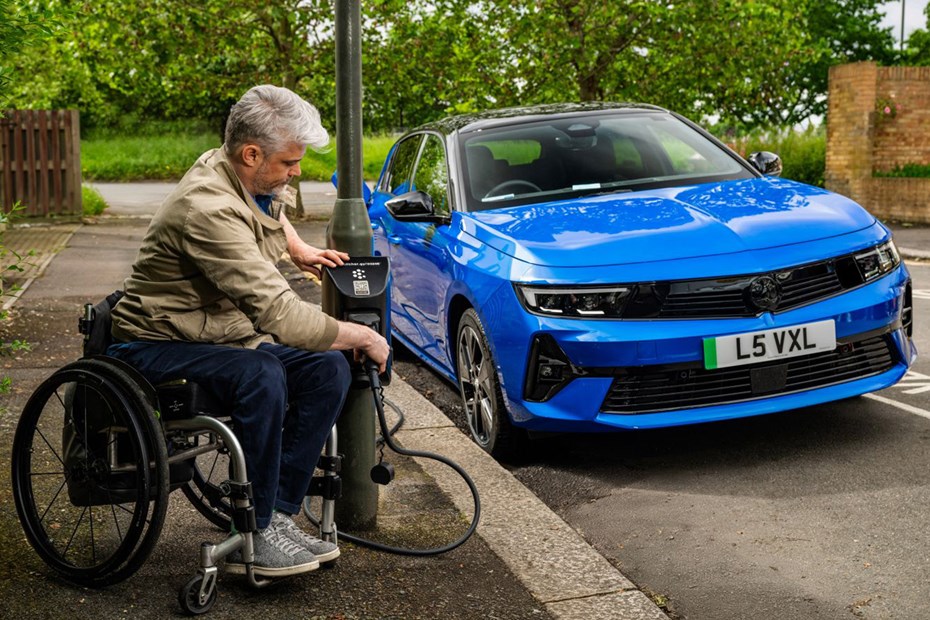More than a third of UK councils don’t provide any on-street electric vehicle (EV) charging suitable for disabled drivers, leaving millions at risk of being excluded from the electric car ownership, new research has revealed.
Freedom of Information (FOI) data gathered by Vauxhall shows that 111 out of 289 UK councils admit they have no on-street charge points either specifically adapted for disabled drivers, or compliant with the British Standards Institution’s (BSI) PAS 1899:2022 accessible charging standard.
It means just 2.2% of the UK’s on-street chargers are suitable for disabled drivers’ needs, a figure unchanged from last year. This raises fresh concerns that disabled motorists, many who rely on public infrastructure because they can’t charge at home, are being left behind as the UK’s EV network expands.
Disabled drivers face barriers to EV switch
The Motability Foundation, which created the PAS 1899 standard alongside the UK Government, estimates that 1.35 million disabled drivers will depend partly or wholly on public chargers by 2035. Yet new data from Motability, shows that 65% of its customers won’t consider an EV until they have no other choice. Nearly half (45%) say finding accessible public chargers near them is simply too difficult.
Vauxhall is a founding partner of the Motability Scheme, and launched its Electric Streets of Britain initiative to help expand on-street charging for the 40% of UK drivers without driveways or private parking. The scheme allows motorists to register their streets and flag if they need chargers suitable for disabled access. So far, more than 12,000 streets have been logged as needing on-street charging through Electric Streets, including over 150 specific requests for disabled-access charging.
Andrew Miller, Chief Executive of Motability Operations, said: ‘We hear from our customers every day and many of them tell us the same thing. They’re struggling with the change, and public charging is their biggest worry.’
A recent Public Accounts Committee report also warned that poorly designed charge points – from heavy cables to units placed awkwardly near kerbs – risk freezing disabled drivers out of the electric future entirely.
What this means for you
If you’re a disabled driver considering the best electric cars, the reality is that finding accessible public charging remains tough – especially if you rely on on-street charging. Despite big promises about EV infrastructure growth, too few councils are planning charge points that meet the PAS 1899 accessibility standard.
If you’d benefit from on-street EV charging, whether disabled or not, you can help shape where chargers go by registering your street and any specific requirements at the Electric Streets website. For anyone thinking about going electric via the Motability Scheme, it’s worth factoring in public charging access in your local area before making the leap.
Editor’s view: More work needed, and fast
This research paints a worrying picture. The UK’s EV roll-out is progressing well, aftering a faltering start, but it’s no good if it leaves huge groups of people stranded at the roadside. Kudos to Vauxhall for highlighting this issue and creating a tool for drivers to raise their hands and say, ‘We need help here.’
The real responsibility lies with councils and government to make sure EV infrastructure works for everyone, not just those lucky enough to have a driveway. Accessible charging shouldn’t be a nice-to-have. It’s a necessity – and the fact that the number of disabled-access chargers hasn’t budged in a year is pretty shameful. If we want a fair EV future, this needs fixing. And fast.
Just so you know, we may receive a commission or other compensation from the links on this website - read why you should trust us.




